Gorilla! There is no other word like it and certainly no other animal like it.
Many city-dwellers have seen gorillas… in Hollywood blockbusters and in zoos. Many of the world’s famous zoos house gorillas. In the US, the Bronx, Lincoln Park and San Diego Zoos are some of the most well-known. Most people know a few things about them – they occur in Africa, perhaps how much the Silverbacks weigh, that the babies are playful and cute and that gorillas are endangered. What does it take to move us from the zoo to a rainforest safari in search of these great apes living wild and free?
Here we look at the most frequently asked questions about gorilla trekking, the various gorilla species and share our experiences of these African countries where gorillas are found…
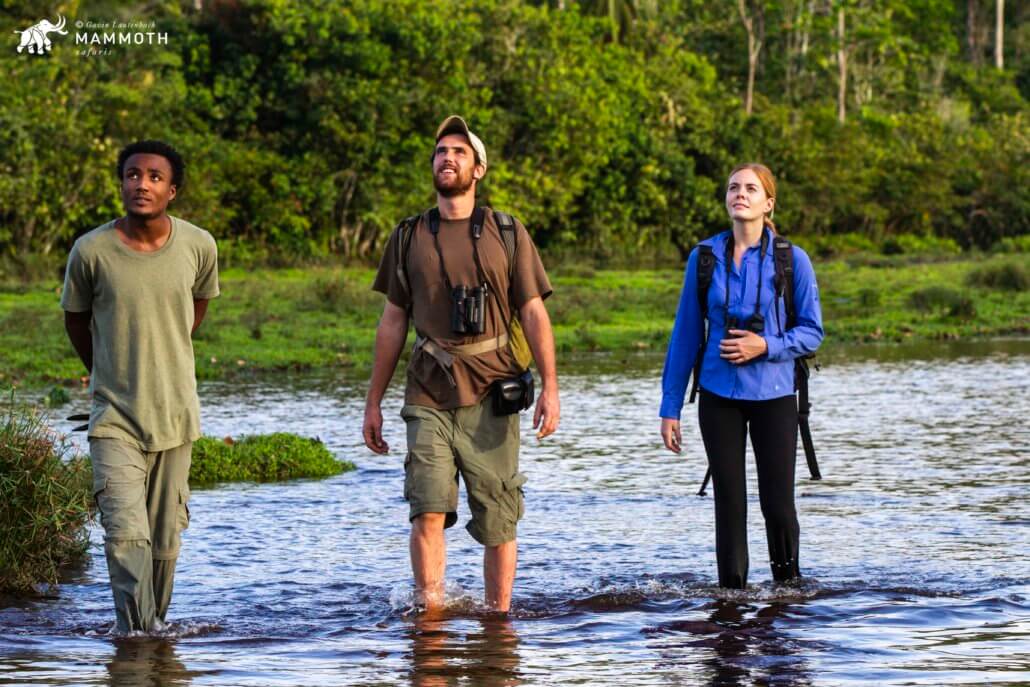
Be prepared to immerse yourself in the journey – Gorilla trekking is a real adventure and will make for an unforgettable experience. Here guests enjoy exploring Odzala National Park on a forest hike. Gorilla trekking trips have other activities on offer as well
Gorilla trekking FAQ’s…
-
Is it safe?
YES. Gorillas are massive animals, but vegetarians. Your guides will inform you about the appropriate behaviour in the presence of the gorillas, especially the big silverback. Adhering to the guidelines will ensure a safe and enjoyable experience. The guides will also do there best to enforce a 5-7m distance from the gorillas, but this is not always possible. The use of a camera flash is not permitted as the light is deemed disturbing to the animals. To keep the gorillas safe from us, you will not be allowed to trek if you have are ill with colds & flu at the time. Most sites will provide medical face masks and insist on them being worn once the gorillas are found. Co-operation in this regard is essential.
-
When is the best time to go?
Broadly speaking, from June to September and December to February are the drier season windows preferred by most. This means busier hotels and less permit availability, so planning well in advance is critical. Those prepared to slip in the mud and experience the rainforest with rain will find things cheaper and less busy, so prepare to be adventurous if this is your preference!
-
Do I need to be fit?
Moderate fitness and the ability to hike up and down is important – the gorillas can move! Most hikes are not strenuous, but sometimes the gorilla groups may move higher into the mountains and then the challenge begins. Most parks will attempt to allocate closer known groups to hikers that are less strong, but there is never a guarantee. The fitter you are the more you’ll enjoy it, so it is well worth getting yourself into good shape before trekking. Hiking poles will greatly enhance your hike as well, especially if the trails are slippery. The average hike lasts 3-4 hours, but some people have been out all day!
-
What should I pack?
Layered clothing with something for rain – which can fall at any time in a rainforest! A peak cap, gloves (for the stinging nettles) and good hiking boots are all recommended. Lastly, a waterbottle and maybe a few snackbars for energy if you end up having to walk far to find the gorillas – essential follow typical hike preparation as you would anywhere in the world. Like any good Boy or Girl Scout – Be prepared. As for the rest of your gear, we suggest hiring a porter to lug your camera gear for you! Hiking gaiters (from your ankles) are also recommended, these will keep the mud and grime out of your shoes and also protect your legs and ankles from scratches. Most camps have them for hire at a nominal rate or you can bring your own.
-
What else can we do there?
In most cases the sites where the gorilla trekking happens, the options for other activities is a bit limited. It varies from country to country. Some have other primate hikes and cultural engagement, but for many simply relaxing in the exquisite highland surroundings at the lodge is prize enough!
-
Is it family-friendly? What age (15+)
Whilst there is no doubt gorilla trekking is fun to do as a family, the age limit of 15 or 16 (country dependent) will mean not all can hike. For those with young families, put it on the bucket-list, plan ahead and go when the kids are older.
The various gorilla species…
Eastern ‘Mountain’ Gorilla
The most endangered gorillas are ironically the most accessible, although that may well stand to reason. The numbers of Eastern ‘Mountain’ Gorilla plummeted over preceding decades mostly due to the effects of rapid population growth and political strife in the region. Thankfully, since the days of Dian Fossey and George Schaller’s pioneering studies in central Africa and due to huge efforts of many organisations and governments, the population has stabilised and even been on the increase. All the mountain gorillas are found in the Virunga-Bwindi mountain landscape which is straddled by 3 countries, Rwanda, Uganda and the DRC. This immense expanse of forest-clad extinct volcanoes is home to all of the currently 800+ that remain on planet earth! You are able to go gorilla trekking in all three countries with some similarities and some differences. Most importantly they all have active gorilla monitoring and habituation programs which means you have an excellent chance of seeing them.
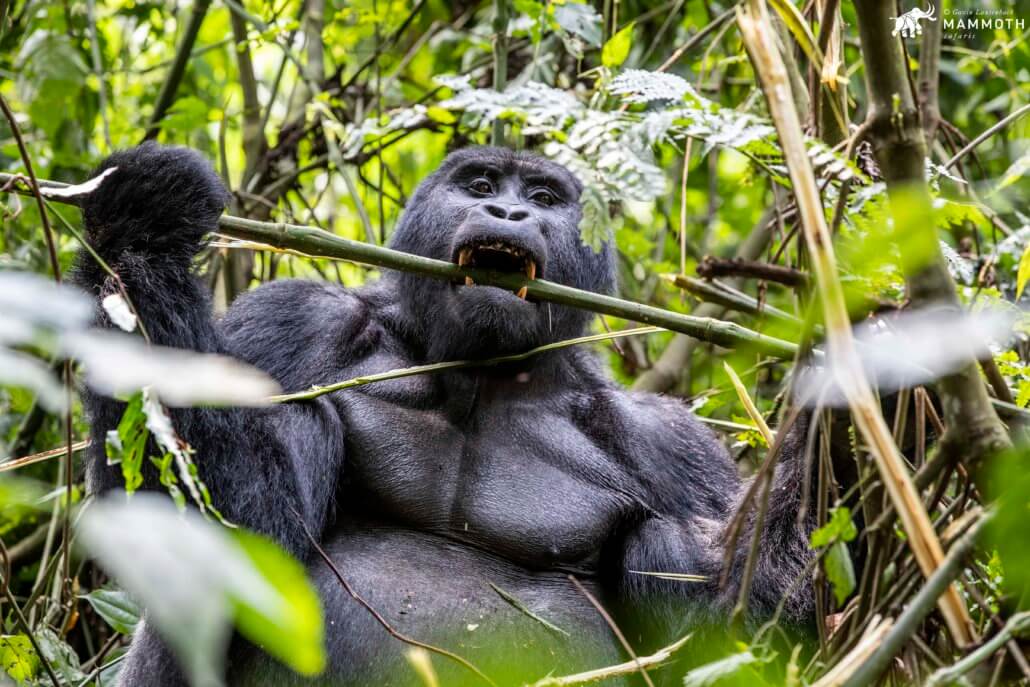
A Mountain gorilla may look fierce and intimidating, but after an hour you will understand these animals a little better… gentle giants for the most part!
Eastern ‘Grauer’s’ Gorilla in the Kahuzi-Beiga National Park in the DRC
This is a subspecies of the Mountain Gorilla and is currently only realistically accessible in the World Heritage Site of Kahuzi-Biega National Park in the DRC. Much of this large park is off limits due to lawlessness, but the small highland sector close to Lake Kivu and the town of Bukavu is accessible. Many habituated families have been killed over the years but the dedicated teams that work there have worked hard to secure and habituate new families. These animals see less humans and the treks are wild, often clambering down ravines tracking the very route the gorillas have followed! Finding this gorilla involves trekking for the adventurous, mobile and fit.
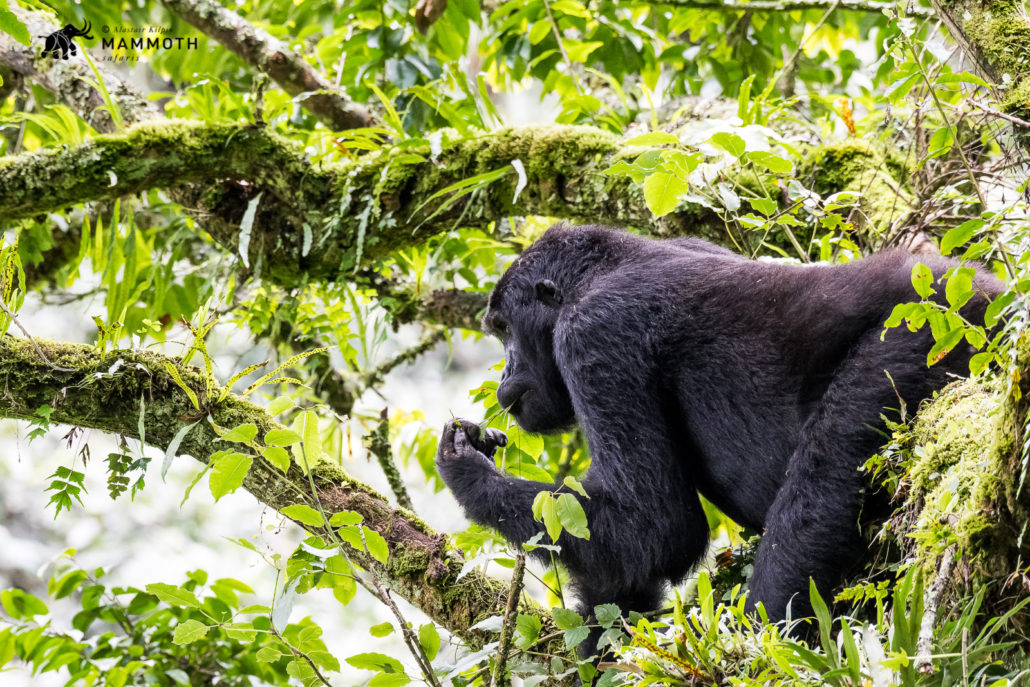
The search for the Eastern ‘Grauers’ Gorilla will involve some strenuous adventure, but the results are so worth the exertion
Western ‘Lowland’ Gorilla
This species is the most widespread and numerous of the gorillas, found broadly across the lowland forest regions of central Africa. Its full subspecies scientific name of Gorilla gorilla gorilla, suggests that this one certainly is a gorilla! These gorilla enjoy fruit as a significant part of their diet and thus spend a lot of time in the trees.
A subspecies of the Western Lowland Gorilla is the Western ‘Cross River’ Gorilla which is critically endangered thanks to widespread logging activity (habitat loss), bushmeat trade and exposure to human diseases in SE Nigeria and Western Cameroon. These gorilla live in mountainous forest and there are possibly fewer than 300 remaining! Access is not mainstream at all, but possible.
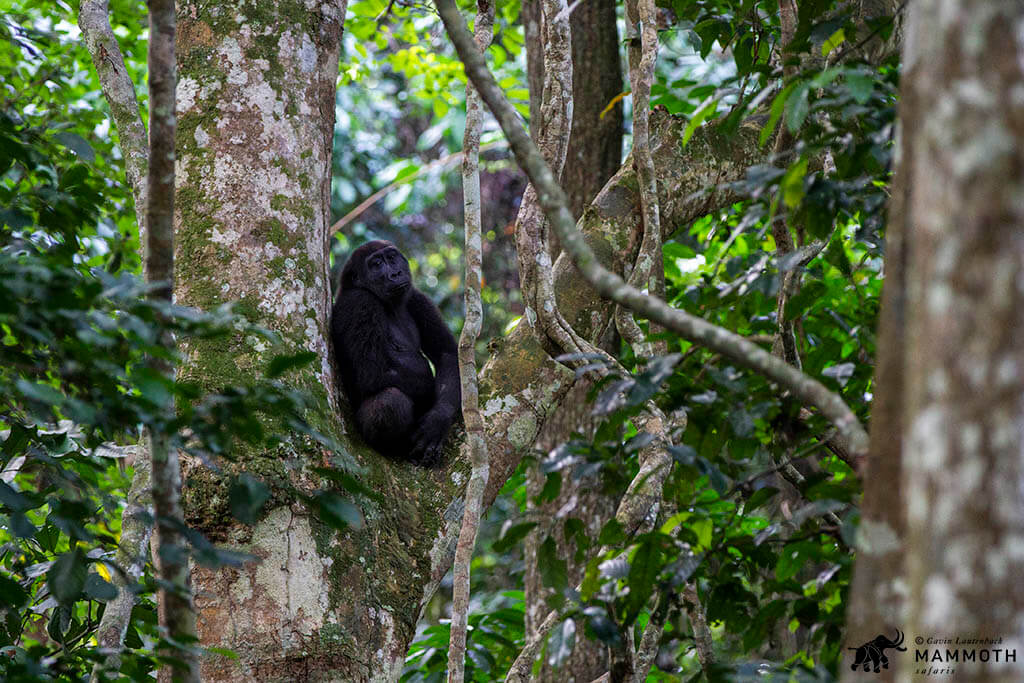
The Western Lowland Gorillas do spend a lot of time in trees and a very good pair of binoculars will most certainly enhance your experience here
The 5 African countries with gorilla tourism
There are 5 African countries where gorillas can be viewed. Some are better geared to gorilla trekking and tourism than others, but all offer some degree of trekking and adventure.
Lets explore Uganda, Rwanda, DRC, Congo-Brazzaville and the Central African Republic… (technically Nigeria and Cameroon also have gorilla but are not geared to tourism)
Uganda
Uganda provides excellent access to a number of habituated gorilla families at Bwindi Impenetrable Forest.
Attractions…
- Bwindi can easily be centred in a number of different itineraries to explore more of Uganda. Over and above the gorillas, the country has big game, the Nile river, excellent birding and of course the chimpanzees
- There is small flight access to various key sites for those that prefer to limit travel by road (Kihihi airstrip is still an hour’s drive from Bwindi but close enough)
- Bwindi Impenetrable Forest has excellent birding, including many rare and endemic species, so staying an extra day or two to experience this is well worth it
Drawbacks…
- As the most established gorilla trekking destination, high season demand means you’ll need to book well in advance to secure permits and the accommodation that fits your liking
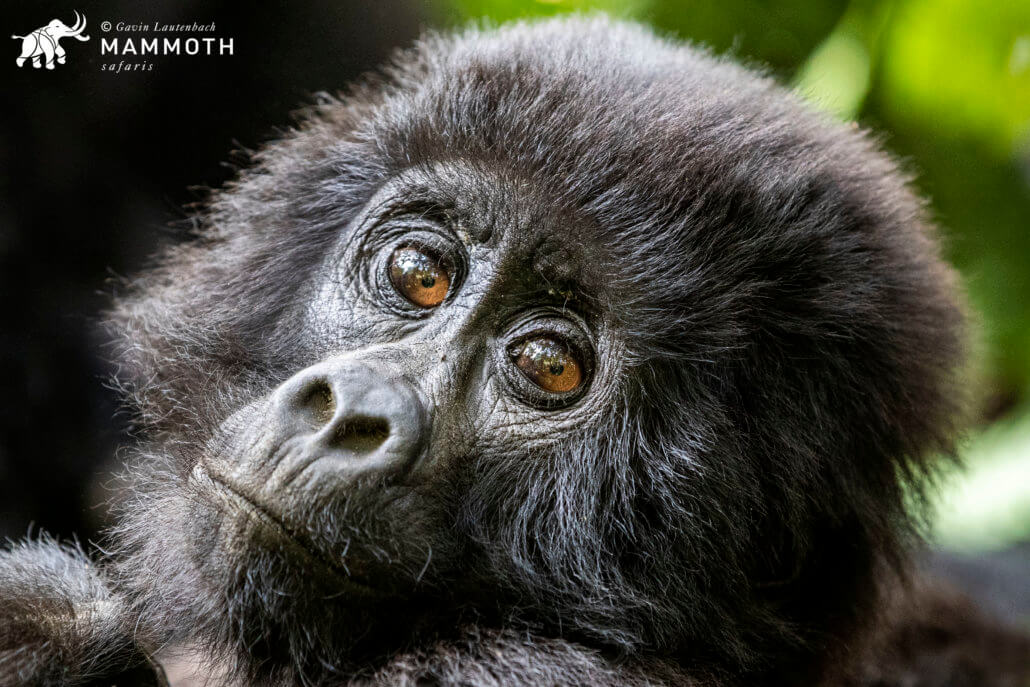
Uganda all but pioneered gorilla trekking tourism and the country offers some excellent accommodation options. The Bwindi Impenetrable Forest offers some terrific sights
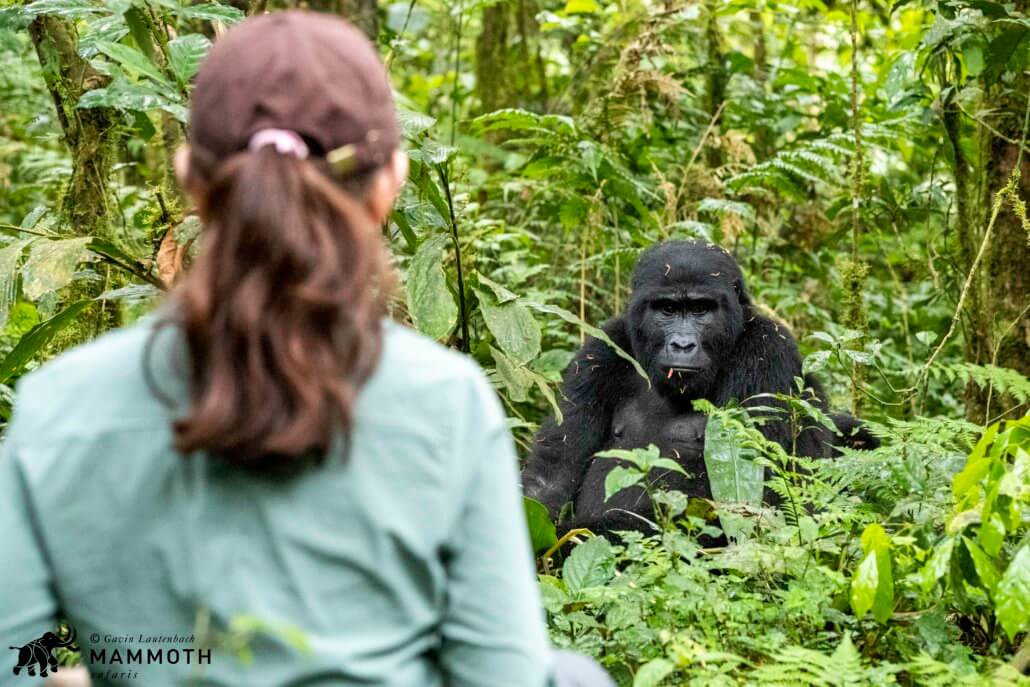
There really is nothing like standing face-to-face with one of these big fellas. Here in the Bwindi Impenetrable Forest of Uganda some of the finest gorilla viewing is to be had
Rwanda
The renaissance that has occurred in Rwanda is nothing short of a miracle. After the 1994 genocide, the country has reinvigorated itself to become one of the shining lights in Africa. Gorilla tourism is a big part of the resurgent economy and as such the country is well geared to welcome international travellers. The airport is modern, the city hotels super and the wilderness areas are seeing an ever-increasing number of top-end lodges emerge. Volcanoes National Park is where the gorillas live.
Discover more about our travels to Rwanda here.
Attractions…
- A stable country with easy access to Kigali and the Volcanoes National Park
- A variety of lodges to choose from, with a growing number of top-end options for ultimate comfort (One&Only, Wilderness, Singita on the way)
- Opportunities to include the other two wildlife destinations of Nyungwe Forest and Akagera National Park into a relatively compact itinerary
Drawbacks…
- The park authorities have recently hiked the gorilla permits to $1500 per person. This is more than double the rate in Uganda and close to four times the rate in the DRC. For those wanting to do trek twice this means a significant cost.
- Volcanoes National Park doesn’t easily offer general forest/birding hikes if you’d like to stay longer and really immerse yourself in the landscape. (There are wonderful Golden Monkeys are an option as well as cultural trips)
- Some lodges are a decent drive of up to an hour away from the park HQ where the trekking is organised from.
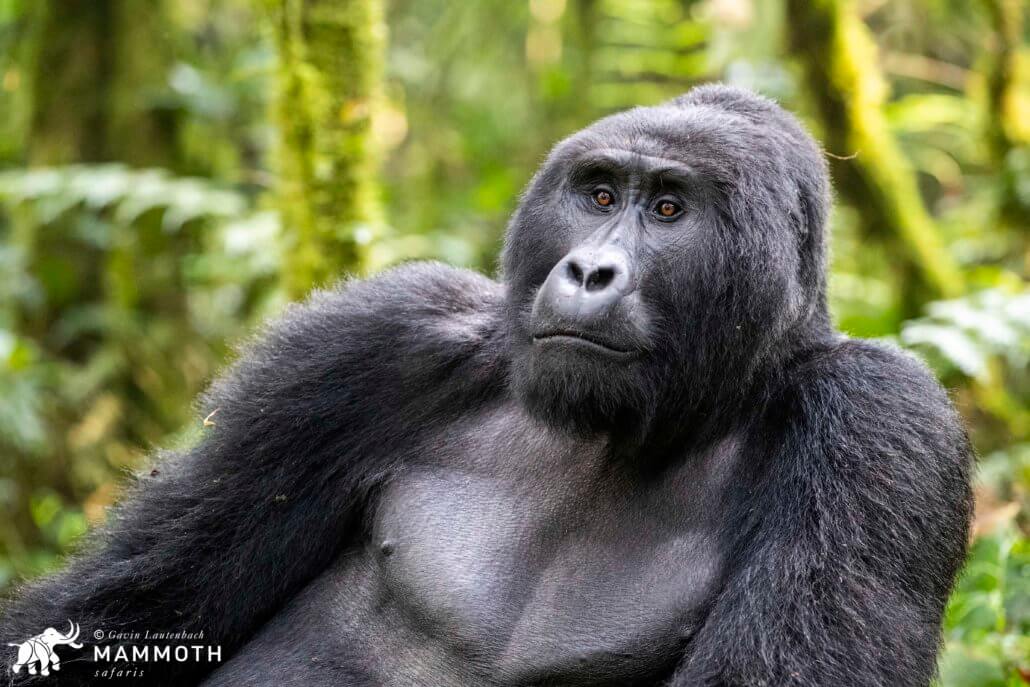
Rwanda has been quick to capitalise on the success of the Ugandan gorilla trekking offerings and is now similarly well geared to offer some exceptional experiences. Growth in tourism in this country is encouraging and we are excited by the opportunities here
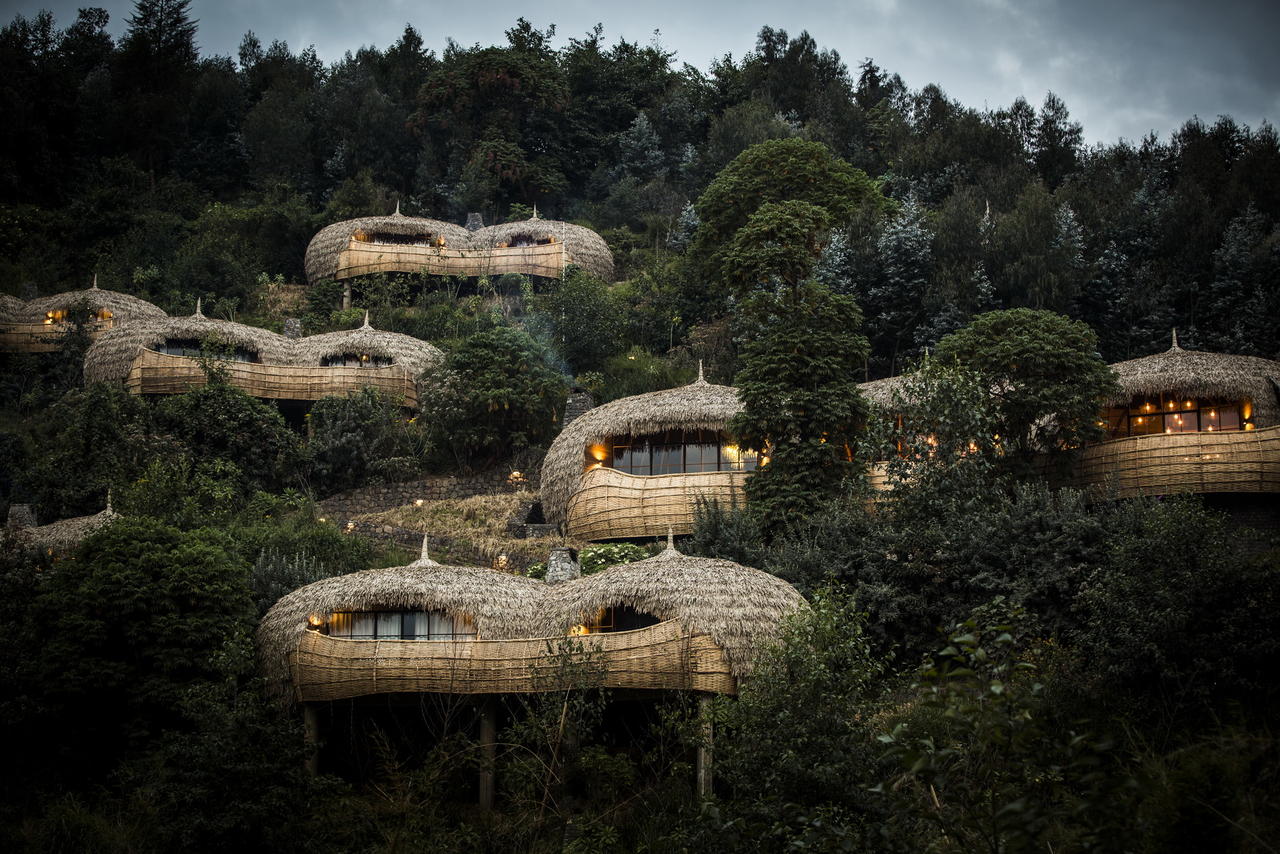
Bisate Lodge is located in the natural amphitheatre of an eroded volcanic cone and has dramatic views of the peaks of the volcanoes Bisoke, Karisimbi and Mikeno emerging through the Afro-alpine forests of nearby Volcanoes National Park. The lodge offers six sumptuous en-suite rooms which maximise comfort, warmth and views while retaining environmental principles and reflecting the culture of surrounding rural Rwanda. This lodge is operated by the safari expertise of Wilderness Safaris and represents one of the most luxurious offerings available from which to base yourself whilst in search of the gorillas
Image credit: Wilderness Safaris
Democratic Republic of the Congo
The ‘Congo’ is still a difficult place to visit, but efforts have been made to secure the eastern region right around Lake Kivu. Access is best by road coming in from Rwanda. The Virunga National Park has an arrangement that visitors to the park for gorillas can pay in advance but have their visa processed on arrival (and this works very well). There are 2 main gorilla options within the DRC…
Discover more about our travels to the DRC here.
Virunga National Park (DRC)
Attractions…
- Gorilla permits are currently significantly cheaper in the DRC than in Uganda and especially Rwanda. Rainy season deals may also be on offer further reducing the cost
- A much less crowded experience with far fewer tourists at present
- There is the real opportunity to have a positive impact on the immense work being done to secure the World Heritage Site that is Virunga National Park (including community projects and the Senkwekwe Gorilla Orphanage)
- The chance to include chimpanzee viewing and the hike to the top of the active volcano Nyiragongo. These can be included on even a short itinerary and can also be combined with other stays in neighbouring Rwanda
Drawbacks…
- Sporadic outbursts of unrest can unsettle you (and family!) before a trip! It is real, but does tend to happen much further north
- General lack of infrastructure in the country (though lodges are very comfortable with good food and cold beer!)
- Getting trip insurance can be difficult
Kahuzi-Beiga National Park (DRC)
Attractions…
- Often you are the only tourists there most of the time!
- A genuinely wild experience but still with habituated gorillas
- Access is easier than one thinks. A flight from Kigali to Kamembe on the Rwanda/DRC border gets you to the border town of Bukavu. From here it is a 1hr drive
- The Lwiro Primate Sanctuary is worth a visit and also within driving distance
Drawbacks…
- Safety & security. You are with armed guards as in all other gorilla trekking sites with tourists, but here the need is just a touch more real (though the highland section where the trekking happens is where all the park’s resources are pooled)
- At this stage no fantastic option to stay at the forest, so you will move in and out of Bukavu unless staying in the park bandas – very simple accommodation offerings
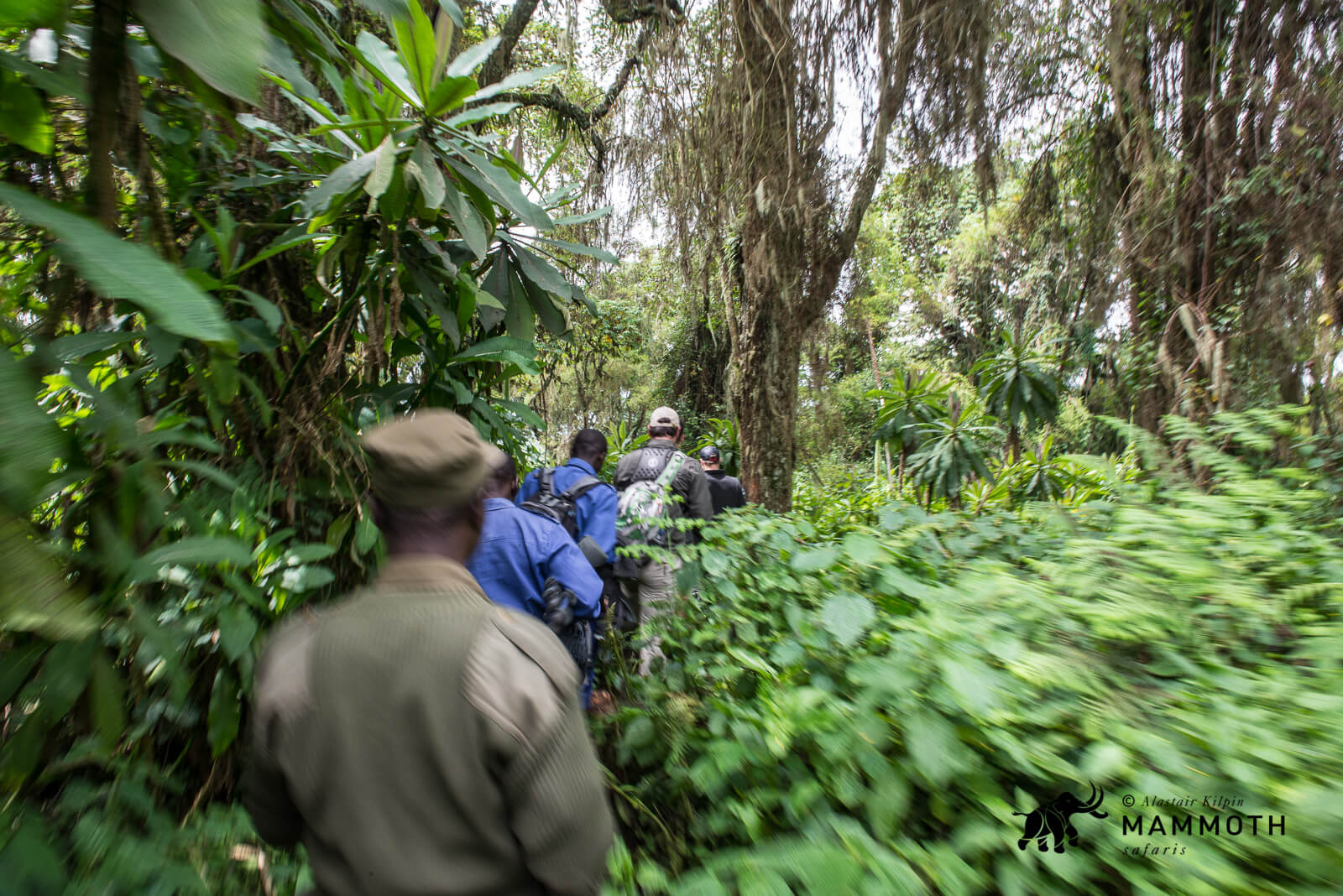
You will trek with your guide, park guards and also porters if you opt to have them assist you. All have good eyes in the forest!
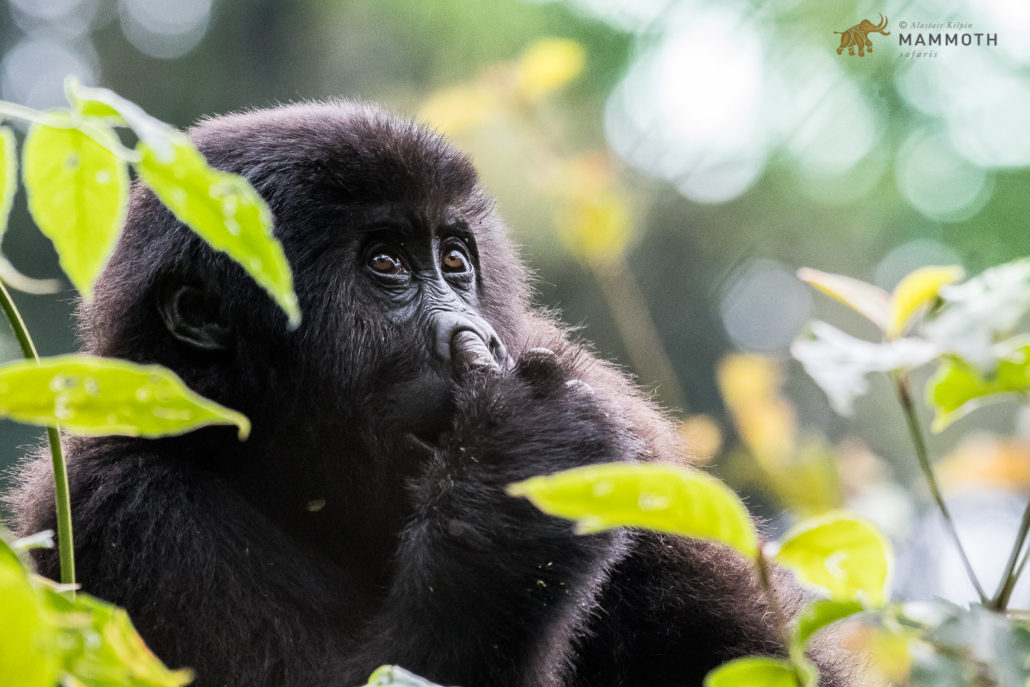
A young Gorilla in the Kahuzi-Beiga National Park in the Democratic Republic of the Congo – a truly wild experience
Republic of Congo (Congo-Brazzaville)
The Republic of the Congo is a former French Colony on the northern bank of the Congo River. Not to be confused with its neighbour, the Democratic Republic of the Congo (DRC). Odzala-Kokoua National Park is part of the second largest coherent rainforest area on earth, hence this piece of central Africa has a significant impact on our global climate, and the existence of all life. The heavily forested landscape is characterised by networks of swamps, bais and rivers making it the ideal habitat for western lowland gorillas.
International flights arrive at Maya-Maya Airport in Brazzaville and access to the Odzala-Kokoua National Park is from here via a 2-hour scheduled flight to the Mboko airstrip in the park. The Maratanceae forest is where all the gorilla trekking happens.
Attractions…
- Odzala-Kokoua National Park is a treasure trove of biodiversity and adventure
- The lodge offerings are comfortable and constantly improving
- There is the possibility of connecting to the Central African Republic from here
Drawbacks
- Its a rainforest – so expect muddy and wet! Be sure to bring spare socks and enough changes of clothes
- The air transfers into and out of the park are on fixed days of the week – limiting flexibility
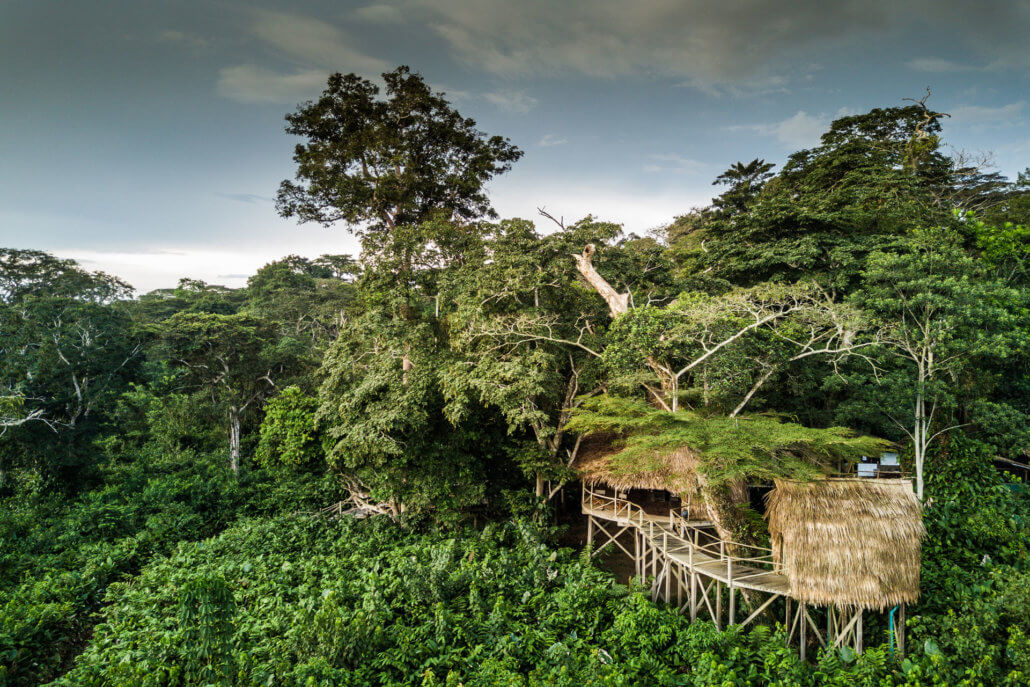
Ngaga Camp is in the Ndzehi Forest on the western boundary of Odzala-Kokoua National Park and consists of 6 rooms beautifully constructed from natural materials such as locally woven raffia palm panels. The rooms are raised on 3 – 4 meter stilts and have 360° wraparound viewing walkways that connect with the main area. The camp has a dining room, lounge, and bar area all on raised decks looking out into the rainforest. Pre-dinner drinks are served on the “star deck” with fire pit which is a dropped deck below the main area. Guests can enjoy post forest walk drinks, cocktail parties or private dinners on the river deck which is located on the Ngaga stream.
Image credit: Classic Portfolio
Central African Republic
In the midst of the ravaging armed conflict which tore the Central African Republic apart, forest elephants, gorillas, leopards and chimpanzees found safety in an extraordinary place – Dzanga Sangha. This is a true natural sanctuary for the emblematic species of the Congo Basin. The Dzanga Sangha National Park is hidden in the middle of the tropical forest, a World Heritage Site that has endured and prevailed, thanks in great part to the continuous support the WWF has provided to the eco-guards protecting the park. The park reopened for tourists in July of 2014. The Central African Republic is a country still very much in turmoil, but the access to the Dzangha-Sangha National Park by small plane from the regional centre of Bangui is very doable. More than just the gorillas, expect incredible pangolin, forest elephants, bongo and much more. This is a real adventure…
Attractions…
- True wilderness and a pioneering feel to any exploration here
- Exceptional biodiversity including forest elephant, forest buffalo, bongo, pangolin
Drawbacks
- As much as the unknown is an adventure, there is a fair amount of uncertainty here that can be unsetting to the uninitiated
- The CAR is not a politically stable country which adds an element of risk
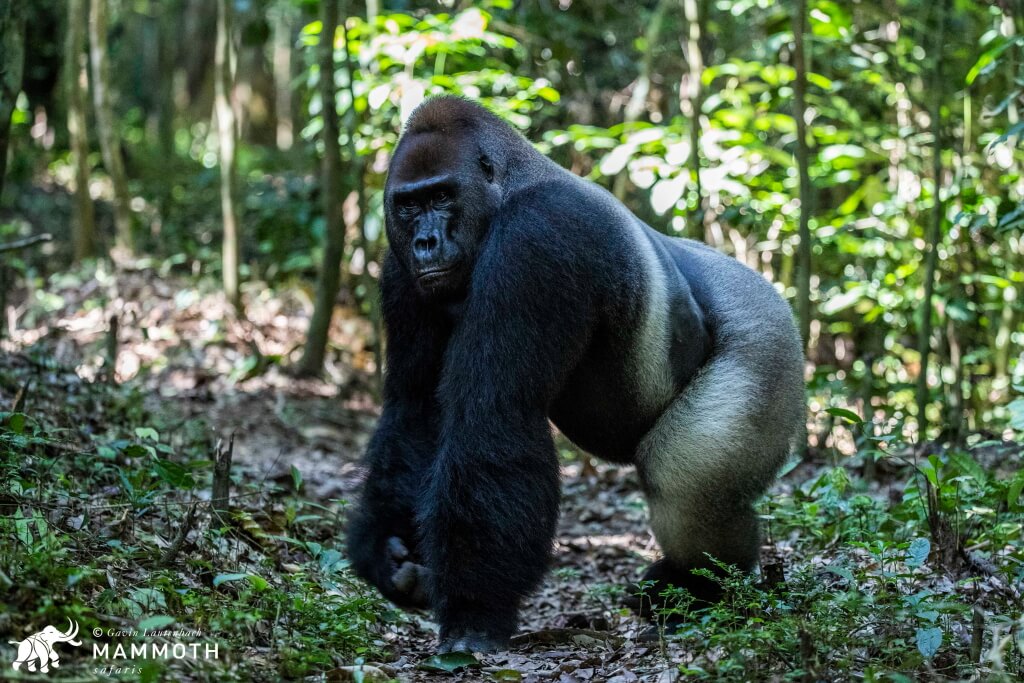
A spectacular and enormous “Silverback” in the Central African Republic demonstrates just why the adult male gorillas are given this title.
Oh – and how much do these “Silverbacks” weigh? The largest ones have been recorded at over 200kgs or 450 pounds!
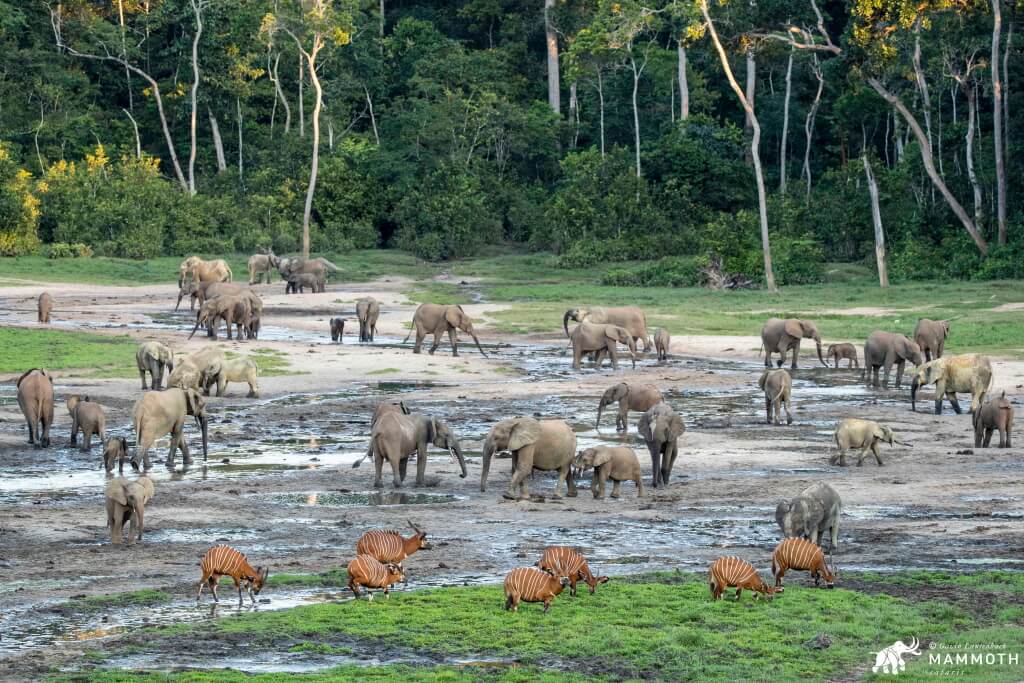
A quite incredible scene in the Central African Republic, capturing the wonderful diversity on offer here. A delightful breeding herd of forest elephant mingles with Bongo antelope on the fringe of the forest
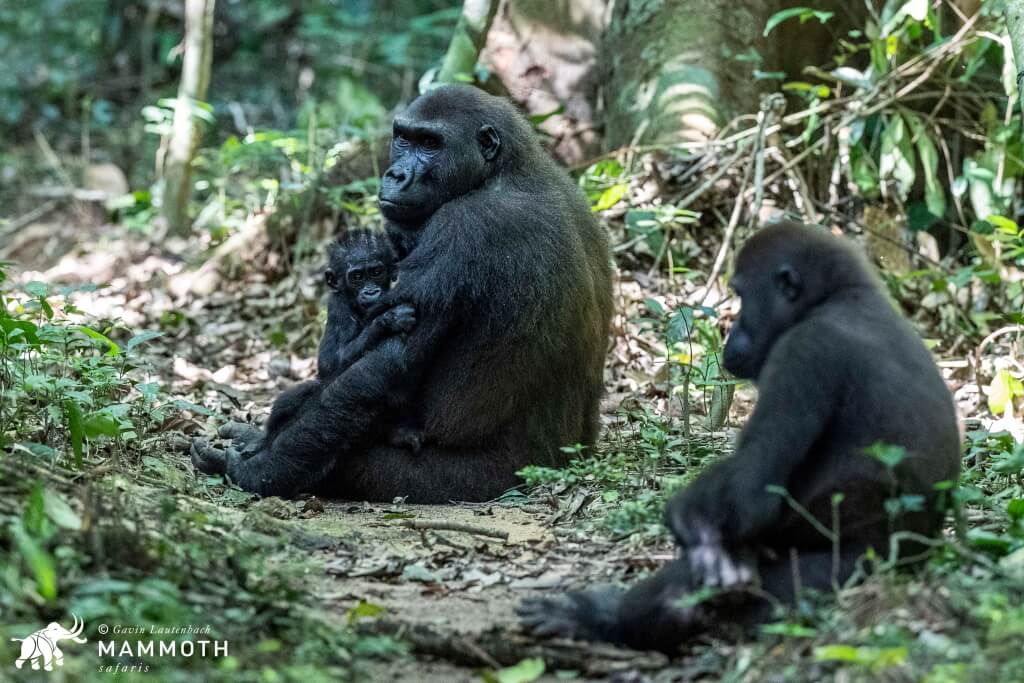
Family groups often settle on the forest floor to groom, feed, play and relax. As can be seen here, these opportunities make for such wonderful viewing
Remember that gorillas are a flagship species that bring travellers to these countries, but they are symbolic of so much more. Take the time to engage with your guides and experience more of what these incredibly biodiverse forests have to offer.
For some bedside reading on the mountain gorillas try one of these classics – “Gorillas in the Mist” by Dian Fossey or “In the Kingdom of Gorillas” by Bill Weber & Amy Vedder.
Whilst a trip to view the gorilla families in the forests of one or more of these central African countries is most definitely an adventure all on its own, there is also the opportunity to include a more traditional safari in your itinerary. The East African countries of Tanzania and Kenya are easily accessed options further afield also exist – the possibilities are endless. Whatever one choses to do with your time in this part of Africa, there is absolutely no question that a gorilla safari will leave you with memories to cherish forever.
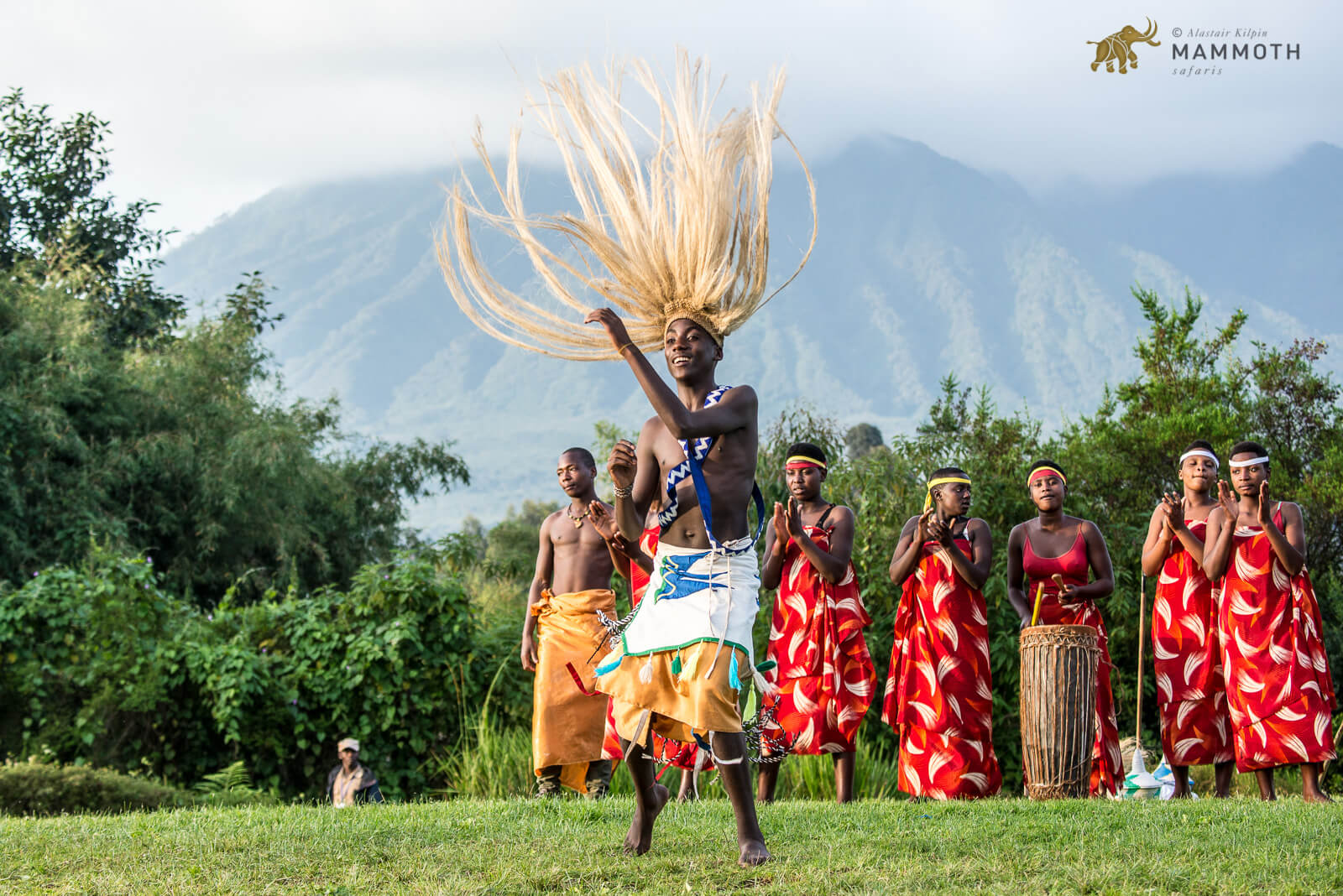
Many of these African countries also deliver some incredible cultural tourism offerings – providing insights into the traditions of the local peoples such as the music and dance of these tribes folk in Rwanda
Below is an example of an itinerary we have put together, combining the classic East African Safari with an exceptional gorilla trekking experience. This is but one way to do it, the options are as vast as the river Congo is long…
How to make this journey of a lifetime a reality…
For more information on how to book your Mammoth Safaris adventure to a discover the Great Apes of Africa, in epic wilderness, enjoying exceptional wildlife and an unsurpassed experience of one of the incredible beasts, please contact a member of our sales team via email at info@mammothsafaris.com and visit www.mammothsafaris.com for more details and other unique destinations and journeys.

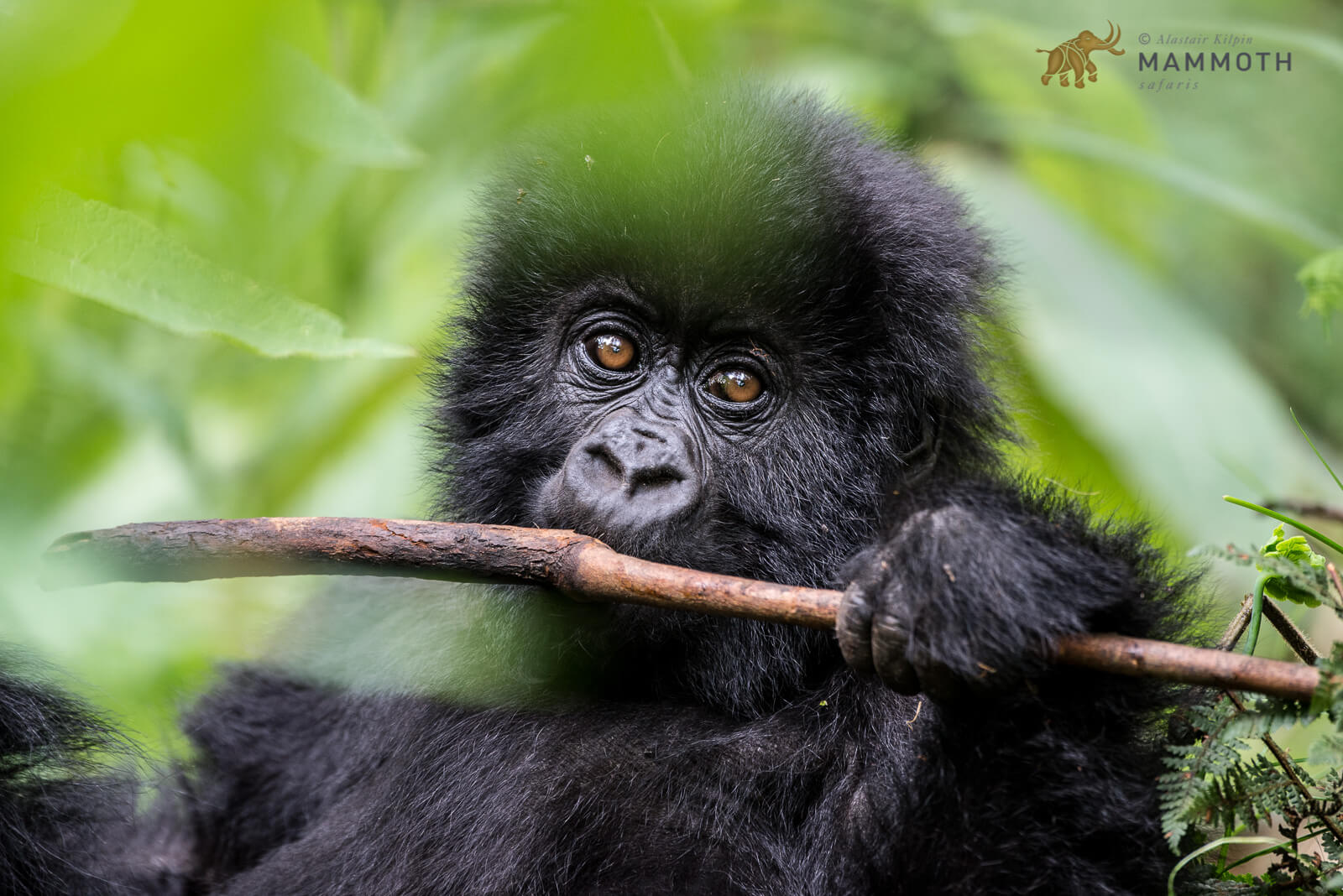


Leave a Reply
Want to join the discussion?Feel free to contribute!